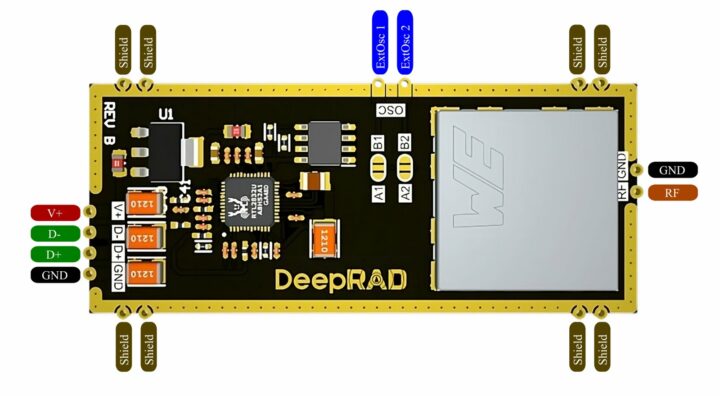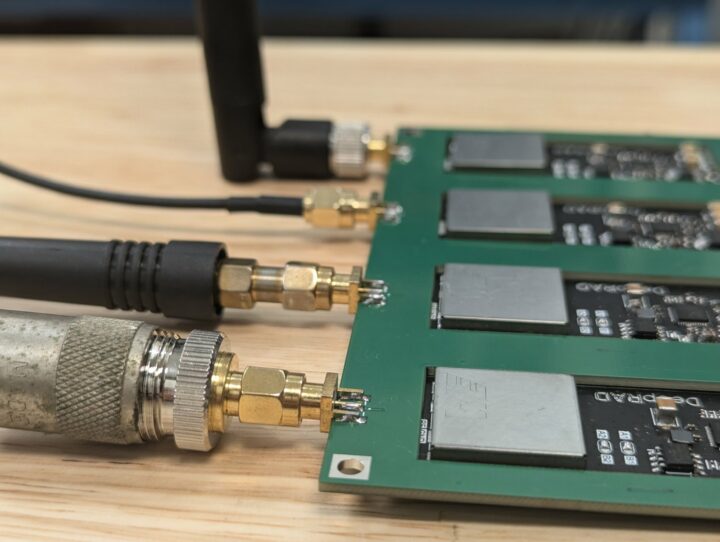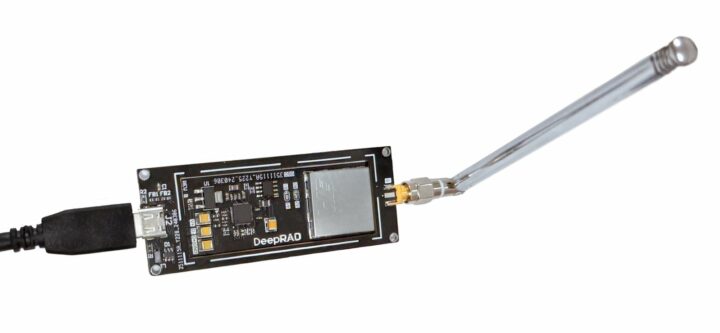DeepRad is a software-defined radio (SDR) receiver built in the RTL-SDR form factor. The modular SDR receiver offers advantages over other RTL-SDR-based devices which make it easier to integrate with other components and build custom solutions for your specific applications.
The DeepRad SDR receiver is based on the RTL-SDR dongle and features the same Realtek RTL2832U demodulator chip with an R860T tuner. The module features D+ and D- pins for USB connection, V+ for 5 V power supply, solderable jumpers for oscillator selection, an RF pin for antenna connection, and 8 shield pin connectors for shielding and support.

The module is targeted at custom designs, with the user free to choose the best components for their application. It is as versatile as a typical SDR receiver, with applications ranging from FM radio listening to aircraft tracking. We have previously covered other RTL-SDR receivers, such as the KrakenSDR and the RTL-SDR Blog V4.
DeepRad SDR specifications:
- Realtek RTL2832U demodulator with a USB 2.0 interface
- Rafael Micro R860T tuner
- Range – 24 MHz – 1.7 GHz
- Bandwidth – 2.4 MHz per channel
- Channels – 4
- Sensitivity – -135dBm
- Ultra-low noise TCXO (Temperature-Compensated Crystal Oscillator) 0.5 ppm
- Shielded primary inductor
- Shielded RF tuner
- Custom heatsink for improved heat dissipation
- Castellated mounting holes for USB, TCXO, and antenna
The DeepRad module is integrated into a motherboard to make it more applicable for plug-and-play use. It is available in two options designed for the crowdfunding campaign. The DeepRad Single has one DeepRad modular SDR receiver integrated into the baseboard with built-in USB Type-C and an antenna connector. The DeepRad Quad is perfect for multi-signal monitoring. It features a USB Type-C connector and four DeepRad modules connected via a USB hub to a single USB Type-A port. The terminal block off to the left-hand side is not mentioned in the documentation but is likely an alternative power source.

The motherboards can be connected to a desktop computer, or even a mobile phone for use on the go. The module is compatible with SDR software applications such as SDR#, GQRX, GNU Radio, and SDR++.
The hardware design files for the Single and Quad motherboards are available on GitHub, under the MIT license. The quick start guide can be found on the DeepRad website.
The DeepRad project is live on CrowdSupply and has only managed to attract a few backers so far. DeepRad Single and Quad devices are priced at $80 and $340, respectively. The boards are shipped with a 3D-printed enclosure, a USB C-to-C cable, and telescopic antennas (one or four). The Developer Kit, priced at $490, is targeted at people who are interested in creating custom integrations and comes as a set of six DeepRad receivers, two Quad motherboards (unpopulated), four Single motherboards, two USB C-to-C cables, six telescopic antennas with SMA connector, and a user manual plus quick start guide. Shipping is free within the United States and costs $12 to the rest of the world.

Tomisin is a writer specializing in hardware product reviews, comparisons, and explainers. He is very passionate about small form factor and single-board computers.
Support CNX Software! Donate via cryptocurrencies, become a Patron on Patreon, or purchase goods on Amazon or Aliexpress





